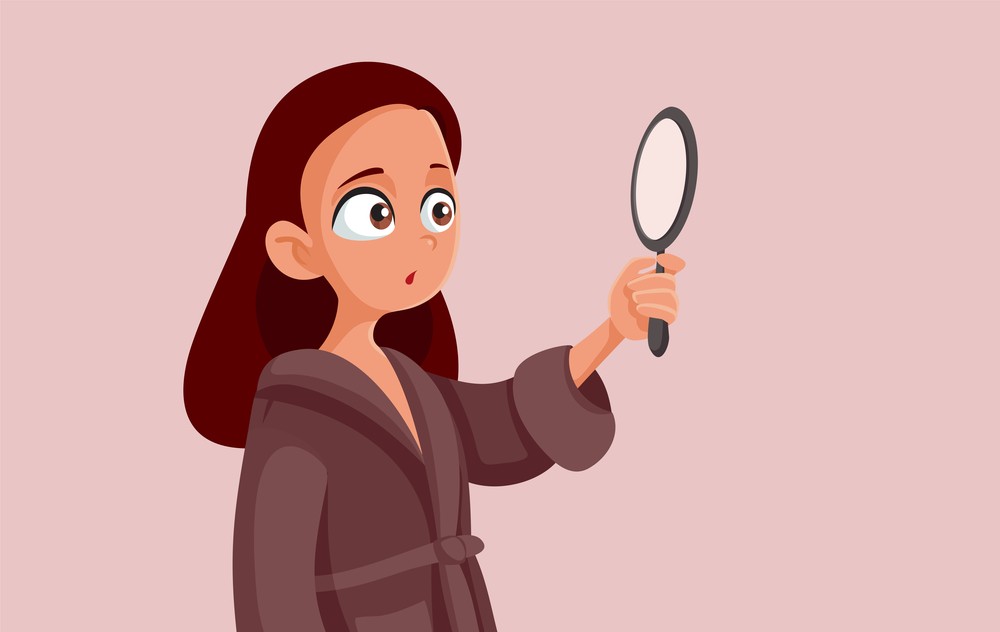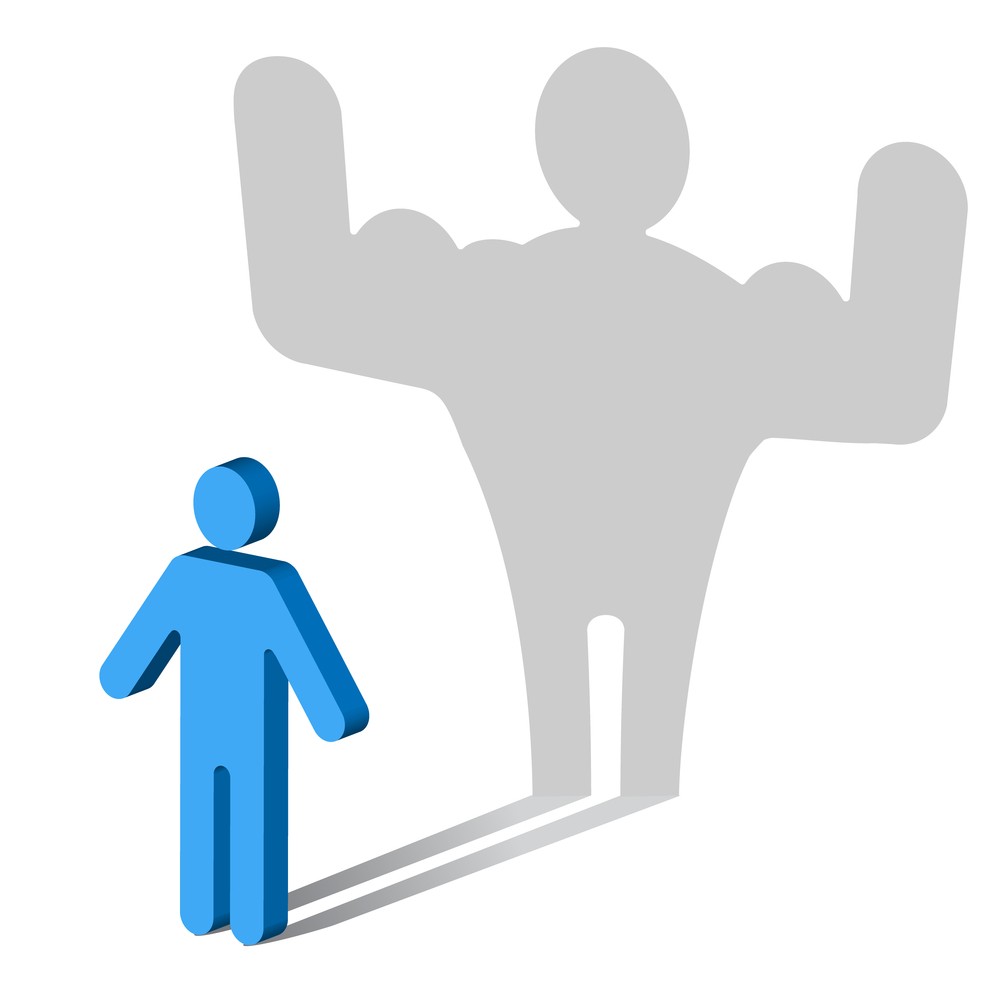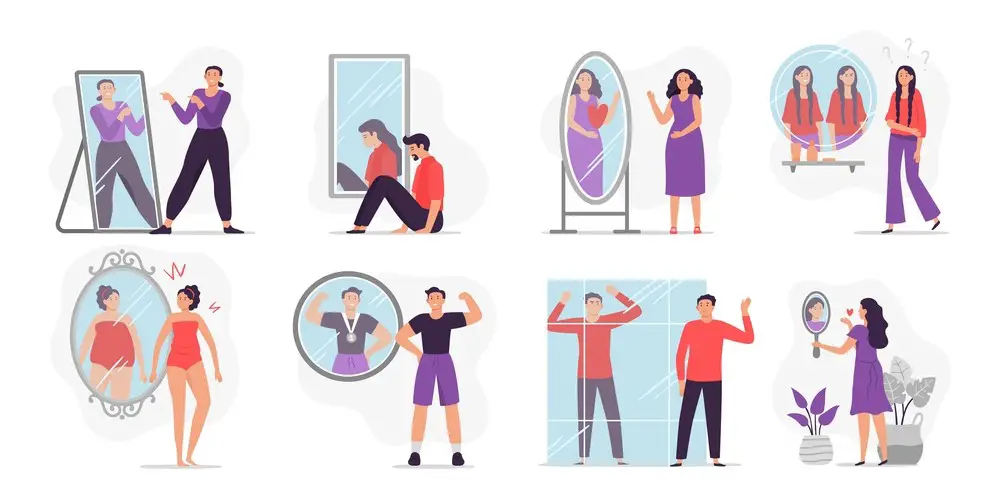As a BetterHelp affiliate, we receive compensation from BetterHelp if you purchase products or services through the links provided
Body dysmorphia is a severe mental health condition affecting millions worldwide. It can cause individuals to become fixated on perceived flaws in their appearance and develop extreme anxiety levels or even depression due to these feelings. Understanding the characteristics, treatments, and coping strategies for body dysmorphic disorder (BDD) is essential to managing symptoms effectively. In this blog post, we will discuss what BDD is, the treatment options available, including online therapy vs in-person therapy, the pros and cons of each type of treatment, facial dysmorphia specifically, and its various treatment methods.
Table of Contents:
Table of Contents
What is Body Dysmorphia?
Body dysmorphia (BDD) is a mental health disorder characterized by an excessive preoccupation with perceived flaws in one’s physical appearance. It can cause significant distress and interfere with daily functioning. People with BDD may have obsessive thoughts about their appearance, such as worrying about being too fat or attractive. They may also engage in compulsive behaviors such as skin picking or excessive grooming to fix perceived flaws. Additionally, people with BDD often avoid social situations because they fear being judged for their appearance.
Definition of BDD: Body dysmorphic disorder (BDD) is a psychiatric condition characterized by persistent and intrusive preoccupations with imagined or slight defects in one’s physical features that cause significant distress and impairment in functioning.
Common signs and symptoms of BDD include obsessive thoughts about one’s appearance, compulsive behaviors such as skin picking or excessive grooming, avoidance of social situations due to fear of being judged, low self-esteem, depression, anxiety, suicidal ideation or attempts at suicide, and perfectionism tendencies.
The exact causes of body dysmorphic disorder are unknown. Still, it is believed to be related to genetics, environmental factors, psychological issues such as low self-esteem and perfectionism, traumatic experiences, and family dynamics.
Body Dysmorphia is a mental health condition that affects how someone perceives their body. It can cause distress and affect one’s quality of life, but fortunately, treatment options are available to help manage it. Let’s explore these treatment options in the next heading.
Treatment Options for BDD
Psychotherapy is a standard treatment for body dysmorphia (BDD). Cognitive Behavioral Therapy (CBT) is an evidence-based form of psychotherapy that helps individuals identify and challenge distorted thinking patterns contributing to their distress. Through CBT, individuals learn to recognize the irrational thoughts associated with BDD and replace them with more realistic ones. Exposure therapy is another type of psychotherapy used to treat BDD. This technique gradually exposes individuals to feared situations to reduce anxiety levels over time. Interpersonal therapy (IPT) focuses on improving relationships with others by addressing communication issues, social skills deficits, or other interpersonal problems related to BDD.
Medication may also be prescribed as part of a comprehensive treatment plan for body dysmorphia disorder. Antidepressants such as selective serotonin reuptake inhibitors (SSRIs) are commonly used for treating symptoms of depression or anxiety associated with BDD. In some cases, antipsychotics may be prescribed if the individual has severe delusions or hallucinations related to their condition.
Alternative treatments such as yoga, meditation, and mindfulness can also help manage symptoms of body dysmorphia disorder. Yoga can help reduce stress levels while increasing relaxation and self-awareness; meditation can promote emotional balance; and mindfulness techniques can help raise awareness about one’s thoughts and feelings to better cope with difficult emotions associated with BDD. Additionally, healthy habits such as regular exercise and getting enough sleep are essential components of any successful treatment plan for this condition.
It is essential to understand the different treatment options available for body dysmorphia and weigh the pros and cons before deciding which option is best suited for you. Next, look at each treatment option’s specific advantages and disadvantages.
Pros and Cons of Different Treatments for BDD
Psychotherapy Pros and Cons: Psychotherapy is a form of treatment for body dysmorphia that involves talking with a trained therapist. It can help people to identify the underlying causes of their BDD, develop coping strategies, and learn how to manage their symptoms. The pros of psychotherapy include the fact that it is non-invasive, relatively inexpensive compared to other treatments, and is effective in treating BDD. However, one potential con is that it may require multiple sessions over an extended period before results are seen.
Medication Pros and Cons: Medication can quickly relieve symptoms but may have side effects such as weight gain or sexual dysfunction that must be monitored closely by a doctor. Some medications used to treat BDD include antidepressants such as selective serotonin reuptake inhibitors (SSRIs) or tricyclic antidepressants (TCAs). The pros of medication have its ability to provide symptom relief quickly; however, there are some cons associated with this type of treatment including possible side effects ranging from mild to severe depending on the individual’s response.
It is essential to consider the pros and cons of different treatments for BDD when seeking help. Online therapy can be a great option, but it’s necessary to understand its benefits and drawbacks before deciding.
Online Therapy for BDD
Online therapy is an increasingly popular treatment for those suffering from body dysmorphia disorder (BDD). It offers convenience, anonymity, affordability, and access to specialized therapists treating this condition. However, before embarking on online therapy for BDD, some drawbacks should be considered.
Benefits of Online Therapy for BDD:
One of the most significant advantages of online therapy is its convenience. Those with busy schedules or limited mobility can easily fit a session into their day without traveling long distances or taking time off work. Additionally, online sessions offer greater privacy and anonymity than traditional face-to-face sessions, benefiting those who feel uncomfortable discussing personal issues in public settings. Furthermore, many online therapists offer more affordable rates than conventional practitioners due to lower overhead costs associated with providing services remotely. Finally, individuals seeking help for BDD may find it easier to locate specialists who have experience working with this particular disorder through an online platform rather than searching locally where such resources may not exist.
Drawbacks of Online Therapy for BDD:
Online therapy for BDD can provide a safe and convenient way to receive help, but it’s essential to consider the pros and cons before deciding which treatment is best for you. Now let’s take a look at in-person therapy for BDD.
In-Person Therapy for BDD
For individuals suffering from body dysmorphia, in-person therapy provides an opportunity to connect with their therapist on a more personal level than what is possible through online sessions. This type of therapy also allows the therapist to observe nonverbal cues that can help them better understand the individual’s experience with BDD and tailor treatment accordingly.
Benefits of In-Person Therapy for BDD
The primary benefit of in-person therapy is developing a deeper connection between patient and therapist. The face-to-face interaction allows both parties to communicate more effectively and build trust faster than if they were communicating solely over video or phone calls. Additionally, physically seeing one another during sessions helps therapists pick up on subtle nuances that may be missed when speaking remotely. This can be especially helpful when understanding how someone experiences their body dysmorphia and any other mental health issues they may have.
Drawbacks of In-Person Therapy for BDD
Unfortunately, some drawbacks are associated with in-person therapy, such as time commitment due to travel time and scheduling conflicts that can arise when trying to coordinate appointments between two people at different locations. Additionally, depending on where you live, finding an experienced therapist specializing in treating body dysmorphia may not always be easy or accessible, which could lead to difficulty in finding someone who meets your needs or budget constraints. Finally, while many insurance plans cover some form of mental health care services, including psychotherapy visits, this coverage often varies significantly by provider. Hence, it is important to check ahead before committing yourself financially if you plan on using insurance benefits for your treatment costs.
Person Therapy for BDD can be a great way to help manage body dysmorphia. Still, other treatment options may be more effective depending on the individual’s needs. Next, we’ll discuss facial dysmorphia and its associated treatment options.
Facial Dysmorphia & Treatment Options
Facial Dysmorphia is a type of body dysmorphic disorder (BDD) in which an individual has an excessive preoccupation with the perceived flaws or imperfections of their facial features. People who suffer from this condition may experience shame, embarrassment, and anxiety about their appearance. They may also feel that they are not attractive enough or that others will judge them based on their physical appearance.
What is Facial Dysmorphia?
Facial dysmorphia is characterized by a person’s distorted perception of his/her face and its features. This can include feeling overly self-conscious about one’s nose size, shape, wrinkles, skin tone, hairline etc., as well as having unrealistic expectations for how one should look. It can lead to extreme levels of distress due to the inability to meet these standards and cause individuals to avoid social situations where they might be judged for their looks.
Treatment Options for Facial Dysmorphia
It is essential to seek professional help if you struggle with facial dysmorphia. There are a variety of treatment options available that can be tailored to your individual needs. Now let’s look at some coping strategies to manage symptoms of body dysmorphia.
Coping Strategies to Manage Symptoms of Body Dysmorphia
Mindfulness techniques are a great way to manage symptoms of body dysmorphia. This involves being aware and present in the moment, without judgment or criticism. Practicing mindfulness can help reduce stress, anxiety, and negative thoughts about your body image. Examples of mindfulness activities include deep breathing exercises, progressive muscle relaxation, guided imagery, and meditation.
Relaxation exercises are another effective tool for managing symptoms of body dysmorphia. These exercises involve calming activities that reduce tension in the body and mind while promoting feelings of peace and relaxation. Examples include yoga poses such as child’s pose or downward facing dog; listening to soothing music; taking a warm bath; journaling; coloring mandalas; going for a walk in nature; practicing tai chi or qigong movements, or simply sitting quietly with eyes closed focusing on your breath for several minutes each day.
Establishing healthy habits is an essential part of managing symptoms of body dysmorphia as well as overall well-being. Eating nutritious meals regularly throughout the day helps maintain energy levels which can be beneficial when dealing with difficult emotions related to BDD, such as depression or anxiety. Exercise is also essential for physical and mental health; it releases endorphins which can boost mood and self-esteem while helping reduce stress levels simultaneously. Finally, getting enough sleep every night is essential – aim for 7-9 hours per night if possible.
FAQs
How do you know if you have body dysmorphia?
Body dysmorphia is a mental health disorder characterized by an obsessive preoccupation with perceived flaws in one’s physical appearance. Symptoms may include excessive worrying about minor or imagined defects, comparing oneself to others, and avoiding social situations due to shame or embarrassment. Other signs of body dysmorphia can include frequently checking the mirror for perceived imperfections, excessively seeking reassurance from others regarding one’s appearance, and engaging in compulsive behaviors such as skin picking or hair pulling. If you are experiencing any of these symptoms, you must speak with a mental health professional who can help diagnose and treat your condition.
What is the leading cause of body dysmorphia?
Body dysmorphia is a mental health disorder characterized by an intense preoccupation with perceived flaws in one’s physical appearance. It is believed to be caused by genetic, environmental, and psychological factors. People with body dysmorphia often experience extreme distress due to their distorted perception of their bodies and may engage in compulsive behaviors such as excessive grooming or checking mirrors. Additionally, social media use has been linked to increased rates of body dysmorphia as people compare themselves to unrealistic standards of beauty portrayed online.
What does body dysmorphia look like?
Body dysmorphia is a mental health disorder that causes an individual to have an extreme preoccupation with perceived flaws in their physical appearance. This can manifest as a distorted body image, where the person sees themselves as much bigger or smaller than they are. They may also be overly critical of specific body parts, such as facial features or skin tone. People with body dysmorphia often engage in compulsive behaviors like excessive mirror checking and grooming rituals to try and fix these perceived flaws. These behaviors can lead to significant distress and interfere with daily functioning.
What are the two types of dysmorphia?
The two types of dysmorphia are body dysmorphic disorder (BDD) and muscle dysmorphia. BDD is a mental health condition in which an individual has an excessive preoccupation with perceived flaws in their physical appearance, often leading to shame, low self-esteem, and anxiety. Muscle dysmorphia is a type of body image disorder in which individuals become overly concerned about being too small or not muscular. This can lead to unhealthy behaviors such as extreme dieting and over-exercising. If necessary, both conditions can be managed through therapy, lifestyle changes, and medications.
Is BDD the same as body dysmorphia?
Categorically, no. Body dysmorphic disorder (BDD) is a mental health condition characterized by an excessive preoccupation with perceived flaws in one’s appearance. It can include behaviors such as compulsive skin-picking or mirror-checking. On the other hand, body dysmorphia is an umbrella term that encompasses various disorders related to body image and perception. This includes BDD, eating disorders and muscle dysmorphia (bigorexia). While BDD and body dysmorphia may be related in some ways, they are two distinct conditions that should not be confused or used interchangeably.
How do BDD and body dysmorphia compare?
BDD and body dysmorphia are both mental health conditions that involve an excessive focus on physical features; however, there are some essential differences. BDD is a more severe form of body dysmorphia disorder in which individuals become fixated on perceived or imagined flaws affecting their appearance. By contrast, body dysmorphia refers to any preoccupation with one’s physical appearance that causes psychological distress and affects daily functioning.
Tips to Help Manage Body Dysmorphia
• Connect with a mental health professional who can provide specialized help.
• Stay mindful of your thoughts and recognize when they become unhelpful or distorted.
• Spend time away from social media to avoid comparing yourself to unrealistic beauty standards online.
• Limit time spent in front of the mirror and avoid activities like excessive grooming.
• Practice body acceptance by focusing on your inner strengths rather than external appearances.
• Surround yourself with supportive people and understanding of your struggles.
• Try stress-relieving activities such as yoga, meditation, or breathing exercises to help manage anxiety.
• Make healthy lifestyle changes such as eating a balanced diet and engaging in regular physical activity.
• Reach out for support from family and friends if you need it.
• Utilize support groups and other online resources to connect with others who may be struggling.
• If necessary, seek treatment for body dysmorphia through therapy, lifestyle changes, and medication.
It’s important to remember that you are not alone in this journey and that recovery from body dysmorphia is possible. With proper help and support, individuals can learn to manage their symptoms and lead more fulfilling lives. Take the first step towards leading a healthier life today – you are worth it!
We must also actively support those with body dysmorphia by increasing awareness about the disorder. We can start by discussing our experiences with mental health and being mindful of our language around body image.
Betterhelp Online Therapy
Body Dysmorphic Disorder (BDD) is a mental health disorder characterized by an intense preoccupation with perceived flaws in one’s physical appearance.
People with BDD may have difficulty functioning in their daily lives due to the severity of their distress and the amount of time they spend obsessing over their appearance.
Symptoms can include excessive grooming, skin picking, compulsive mirror checking, avoidance of social situations, and feelings of shame or disgust about one’s body.
Treatment for BDD typically involves psychotherapy and medication. Psychotherapy can help individuals learn to challenge distorted beliefs about their bodies and develop healthy coping strategies for managing symptoms.
Medication such as selective serotonin reuptake inhibitors (SSRIs) is often prescribed to reduce anxiety associated with BDD symptoms.
Online therapy has become increasingly popular among those seeking treatment for mental health issues like BDD due to its convenience and accessibility from anywhere at any time.
Betterhelp is an online counseling platform that offers individualized therapy sessions via video chat or phone calls between clients and licensed therapists specializing in treating various mental health disorders, including BDD.
Clients can also message their therapist directly through the app whenever needed throughout the week without waiting until scheduled appointments occur.
Additionally, clicking any of the banners or links on this article entitles you to 15% off your first month – this offer is exclusive to this blog!
In-person therapy is another option available for those looking for treatment options for BDD. Still, it has some drawbacks, such as limited availability depending on location and cost, which could be prohibitively expensive depending on insurance coverage or lack thereof.
However, face-to-face interaction provides a unique opportunity for clients to receive personalized feedback from a professional while being able to build rapport more quickly than what would be possible through online communication alone.
It also allows therapists greater access to nonverbal cues, which may not always be visible during virtual meetings, making it easier to assess progress made during each session.
Overall, both online therapy platforms like Betterhelp and traditional in-person counseling services provide effective methods of treatment when dealing with Body Dysmorphic Disorder; however, it comes down to personal preference when deciding which approach works best given individual circumstances.
Click here to save 15% your first month
- Stress Management: What is the Relationship Between Stress and Addiction? - June 28, 2024
- Exploring Techniques to Maintain a Healthy Lifestyle without Drugs - May 28, 2024
- How Acupuncture Helps Treat Chronic Fatigue Syndrome - May 28, 2024
This site contains affiliate links to products. We will receive a commission for purchases made through these links.








